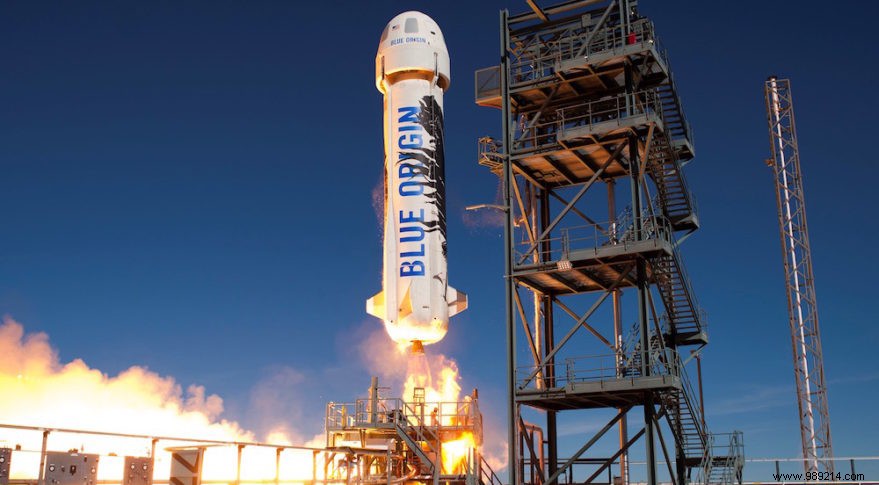For several years, Jeff Bezos' company Blue Origin (Amazon) has been planning to take tourists into space, just over 100 km above above the Earth's surface. These flights, which must take place aboard the New Shepard launcher, will allow customers to enjoy an exceptional view of our planet. However, the first of these flights could be attempted as early as next April, according to CNBC.
On January 14, Blue Origin conducted the fourteenth automatic flight test of its New Shepard launcher from the Corn Ranch, Texas site. Called NS-14, this successful flight allowed the testing of a brand new booster and an improved capsule in which future Blue Origin customers will stay. Among these notable improvements were a push-to-talk audio system, allowing the crew to speak to mission controllers, a new integrated alert system panel at each seat, padded wall coverings and noise reduction devices . Air conditioning has also been added.
This flight, which lasted ten minutes and ten seconds (to be viewed at the end of the article), was once again a great success, allowing to ship the crew capsule up to an altitude of 107 km , before the booster comes to land vertically on Earth (like a Falcon 9 booster), followed by its capsule braked by parachutes.

According to CNBC, Blue Origin intends to launch a new test flight within six weeks, or by the end of February, followed by a first manned flight six weeks later, i.e. in early April. However, this calendar has not been officially confirmed.
Eventually, the company also plans to fly every six weeks or so . Naturally, everything will depend on demand, but also on the performance of the New Shepard. As a reminder, the previous mission, NS-13, flew in October after being delayed for several weeks due to a power supply problem. She had also been attempted after a nine-month flight hiatus.
Finally, Blue Origin has not yet disclosed the price for this spaceflight, but it should probably be between 100,000 and 200,000 dollars . During the ascent, passengers will experience acceleration forces of 3 G to 4 G and up to 5 G (G for gravity, Ed) during the descent, although these forces will not last more than ten seconds. In the meantime, travelers will experience between five and ten minutes of weightlessness, during which they can appreciate the Earth through giant portholes to make the most of the spectacle.